The Incas Used Stringy Objects Called ‘Quipus’ To Record Data – We Just Got A Step Closer To Understanding Them
AncientPages.com - For more than a millennium, many Andean peoples used an object called a "khipu" (also spelled "quipu" and pronounced "key-poo") to record and communicate information.
Khipus were made with cords or strings with knots tied into them. And experts understand that many, but not all, of these knots were used to represent numbers.
Khipus used coloured cords adorned with knots at specific points. Jack Zalium/flickr, CC BY-SA
In a new study, I make a numeric connection between two important khipus from history—the first being being the largest khipu ever known and the other one of the most complex.
What were khipus used for?
While khipus were used in earlier times, they were especially important to the Inca Empire, which lasted from around 1438 CE to 1532 CE (when the empire was conquered by the Spanish). Since the Inca did not leave any written records, khipus are understood to have been their main system of communication and record-keeping.
Khipus were commonly made from either cotton or fibers sourced from camelids (the group of animals that includes camels, llamas and alpacas). These materials could be dyed or left naturally colored. Some khipus even include plant fibers, while several incorporate human hair.
It seems specially-trained khipu makers ("khipukamayuqs") made very deliberate decisions when constructing these record-keeping tools. These decisions related to the colors used, the direction of spin and ply of the cord fibers, the spacing and type of the cord attachments, and the structure and position of the knots.
Early Spanish chroniclers wrote about the khipu's various numeric applications, which included recording storehouse inventories, population censuses and tax and tribute obligations.
A new numeric connection
For more than a century, researchers have been studying khipu features in hopes that patterns may emerge from a collective view. In recent decades, their data have been digitized, which is now freely available via the Open Khipu Repository and the Khipu Field Guide.
For my research, I analyzed the data from two khipus found in northern Chile and first recorded by ethno-mathematician Marcia Ascher and anthropologist Robert Ascher in the 1970s. One of these is the largest khipu ever found—spanning more than five meters in length and comprising more than 1800 cords. The other khipu (pictured in the header image) has almost 600 cords in complicated arrangements.
I noticed both khipus used red/white "divider" cords to separate groups of either tens or sevens. The larger khipu was divided into ten groups, with each group having seven cords. The smaller khipu was divided into seven groups, with each group having ten cords (and many subsidiary cords).
After examining and manipulating the data, I realized the smaller and more complex khipu is a summary and reallocation of the information in the larger khipu. In other words, the two khipus record the same data, but represent it differently.
This is the most complicated numeric connection between khipus made to date. It was only possible because of the availability of data and digital tools that make searching for patterns easier—and which wouldn't have been available to Marcia Ascher back in the 1970s.
New khipu clues
While the numbers in these two khipus are counting and allocating something, we don't yet know what that was. Why would it be necessary to have two khipus recording the same information in two different ways? We can only speculate.
Perhaps the larger khipu recorded the collection of different amounts of food crops from the community, while the other recorded how these foods were distributed between those in need, or between storehouses. Both ways of looking at the numbers would have been important to the people who used these khipus.
Experts believe only a tiny fraction of the khipus made throughout history have survived. This is partly because the institutions that used them eventually either became obsolete or used other means of recording after the conquest, combined with a climate that was less than ideal for textile preservation.
Today, about 1,600 khipus remain, residing mainly in collections in the Americas and Europe. Fewer than half of these have had their features digitally saved in research databases.
Through continued digitization efforts, we hope to discover more khipu clues—and make new numeric connections that add to our understanding of ancient Andean peoples.
Provided by The Conversation
This article is republished from The Conversation under a Creative Commons license. Read the original article.
More From Ancient Pages
-
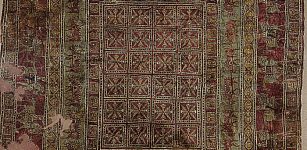 Pazyryk Carpet: Extraordinary Craftsmanship Of Siberian Iron Age Textile Dyers
Archaeology | Mar 5, 2021
Pazyryk Carpet: Extraordinary Craftsmanship Of Siberian Iron Age Textile Dyers
Archaeology | Mar 5, 2021 -
 48,000-Year-Old Tooth That Belonged To Neanderthal Child Found In Northern Italy
Fossils | Sep 19, 2020
48,000-Year-Old Tooth That Belonged To Neanderthal Child Found In Northern Italy
Fossils | Sep 19, 2020 -
 On This Day In History: National Foundation Day Celebrated In Japan – On Feb 11, 660 AD
News | Feb 11, 2017
On This Day In History: National Foundation Day Celebrated In Japan – On Feb 11, 660 AD
News | Feb 11, 2017 -
 Frightening Edinburgh Vaults: The Spooky Underground City Of The Dead
Featured Stories | Jun 4, 2016
Frightening Edinburgh Vaults: The Spooky Underground City Of The Dead
Featured Stories | Jun 4, 2016 -
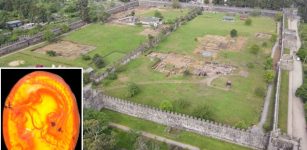 Roman Fort Of Apsaros Reveal Some Of Its Archaeological Secrets
Archaeology | Nov 7, 2023
Roman Fort Of Apsaros Reveal Some Of Its Archaeological Secrets
Archaeology | Nov 7, 2023 -
 Look Inside A Restored Pompeii House – A Unique Glimpse Into Life In Italy’s Ancient City
Archaeology | Jan 11, 2023
Look Inside A Restored Pompeii House – A Unique Glimpse Into Life In Italy’s Ancient City
Archaeology | Jan 11, 2023 -
 Peru’s Wari Culture And Their Ancient ‘Amunas’ Will Help Peru’s Water
Ancient Technology | Apr 13, 2015
Peru’s Wari Culture And Their Ancient ‘Amunas’ Will Help Peru’s Water
Ancient Technology | Apr 13, 2015 -
 Ancient Roman Government Structure And The Twelve Tables
Civilizations | Jan 18, 2016
Ancient Roman Government Structure And The Twelve Tables
Civilizations | Jan 18, 2016 -
 Mysterious 2,000-Year-Old Disco Colgante – Unknown High-Tech Device, Representation Of A Spiral Galaxy Or Something Else?
Artifacts | Nov 20, 2020
Mysterious 2,000-Year-Old Disco Colgante – Unknown High-Tech Device, Representation Of A Spiral Galaxy Or Something Else?
Artifacts | Nov 20, 2020 -
 Four Roman-Era Brooches And A Ring Found In The Borki Forest, Poland
Archaeology | Mar 15, 2024
Four Roman-Era Brooches And A Ring Found In The Borki Forest, Poland
Archaeology | Mar 15, 2024 -
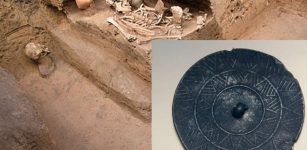 Qijia Culture – Its Disappearance Remains An Ancient Mystery
Civilizations | Feb 5, 2021
Qijia Culture – Its Disappearance Remains An Ancient Mystery
Civilizations | Feb 5, 2021 -
 Sightings Of Mysterious Walking Children And Ominous Beings In California’s Cursed Forest
Featured Stories | Oct 15, 2024
Sightings Of Mysterious Walking Children And Ominous Beings In California’s Cursed Forest
Featured Stories | Oct 15, 2024 -
 Mysterious Chachapoyas ‘Warriors Of The Clouds’ And Their Impressive Structures
Civilizations | Nov 4, 2020
Mysterious Chachapoyas ‘Warriors Of The Clouds’ And Their Impressive Structures
Civilizations | Nov 4, 2020 -
 On This Day In History: Famous Inventor Thomas Edison Died – On Oct 18, 1931
News | Oct 18, 2016
On This Day In History: Famous Inventor Thomas Edison Died – On Oct 18, 1931
News | Oct 18, 2016 -
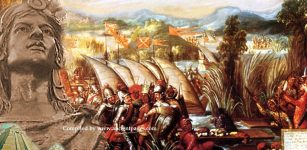 Cuauhtémoc: Brave And Determined Ruler Of Tenochtitlan And The Last Aztec Emperor
Featured Stories | Feb 28, 2018
Cuauhtémoc: Brave And Determined Ruler Of Tenochtitlan And The Last Aztec Emperor
Featured Stories | Feb 28, 2018 -
 10 Divine Weapons Of The Gods
Featured Stories | Jul 28, 2015
10 Divine Weapons Of The Gods
Featured Stories | Jul 28, 2015 -
 Hundreds Of Exceptional Bronze Age Artifacts Discovered In France Were Probably Offerings
Archaeology | Aug 28, 2021
Hundreds Of Exceptional Bronze Age Artifacts Discovered In France Were Probably Offerings
Archaeology | Aug 28, 2021 -
 Mysterious Biblical Celestial City And Its Connection To The North Star – Nonhuman Hands – Part 1
Biblical Mysteries | Feb 22, 2021
Mysterious Biblical Celestial City And Its Connection To The North Star – Nonhuman Hands – Part 1
Biblical Mysteries | Feb 22, 2021 -
 Lunar Society: Great Scientists Of The 18th Century Who Changed The World
Featured Stories | Jul 13, 2018
Lunar Society: Great Scientists Of The 18th Century Who Changed The World
Featured Stories | Jul 13, 2018 -
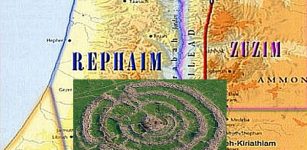 ‘Wheel Of Giants’: Mysterious Complex Of Circles – Prehistoric ‘Stonehenge’ Monument In The Middle East
Featured Stories | Mar 29, 2019
‘Wheel Of Giants’: Mysterious Complex Of Circles – Prehistoric ‘Stonehenge’ Monument In The Middle East
Featured Stories | Mar 29, 2019

